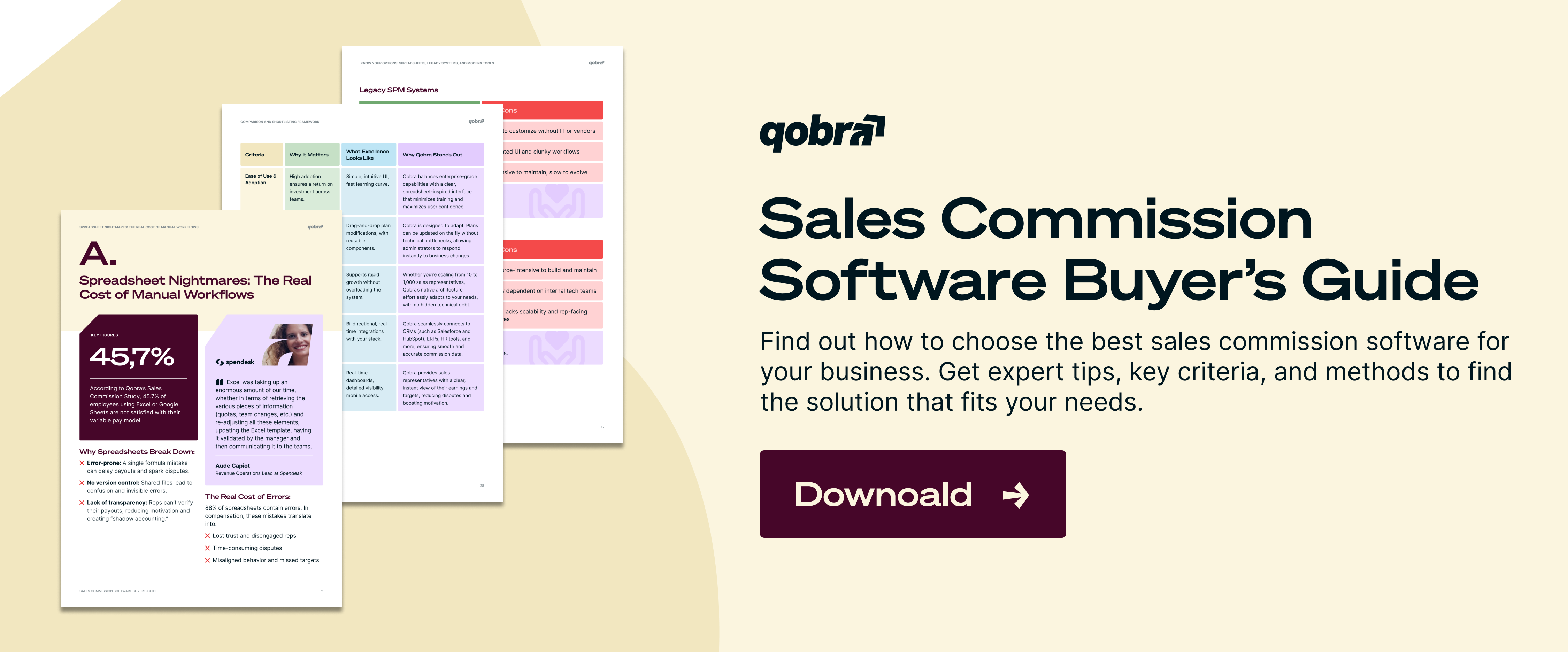Ready to see Qobra in action? Discover and test our platform for free now
Product TourModern sales commission management tools offer native integrations with Salesforce CRM to automate and streamline incentive compensation. Below we provide a structured overview for each major commission platform – Qobra, Spiff, CaptivateIQ, Xactly, and QuotaPath – covering how they integrate with Salesforce, key integration features, benefits for sales teams, and real-world use cases or testimonials.
Qobra
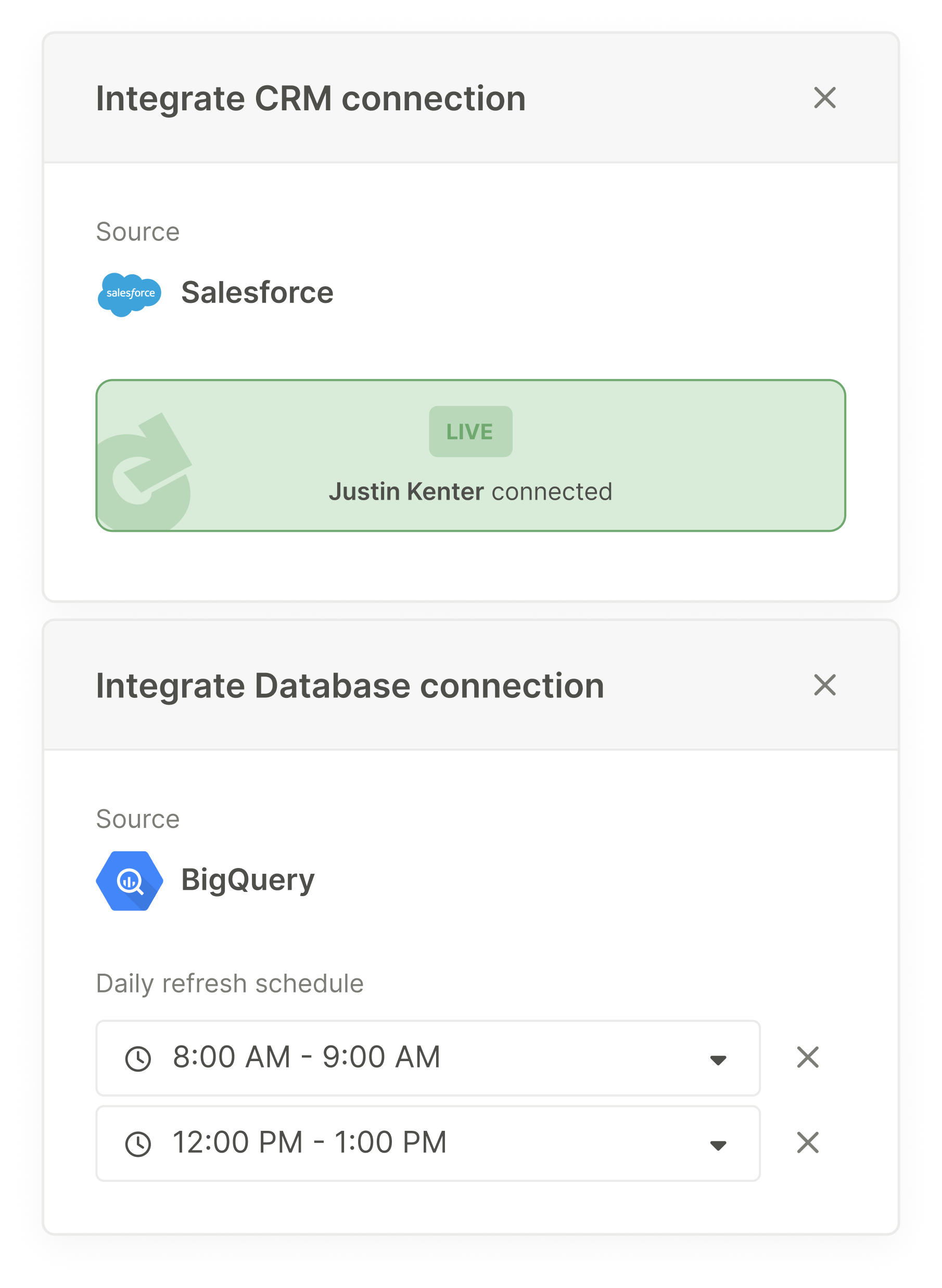
Integration Type:
Qobra provides real-time CRM integrations, including a native connector for Salesforce. It supports daily full data refreshes and bi-hourly syncs, pulling Salesforce records such as opportunities and closed deals directly into Qobra for instant commission calculation. This one-way integration ensures deal data is always up-to-date within Qobra while maintaining flexibility through in-app overrides.
Key Integration Features:
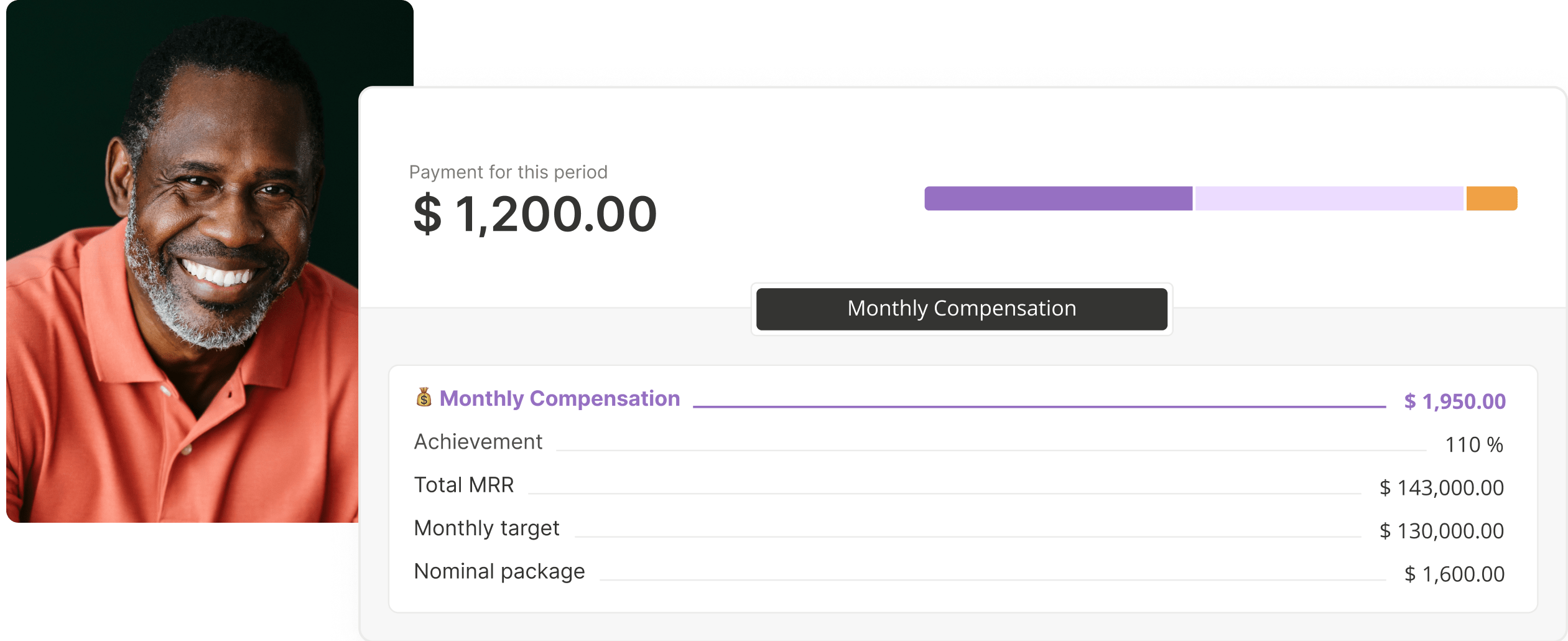
- Real-Time Sync and Zero Data Lag: Qobra’s Salesforce connector delivers near-instant data synchronization. As deals update or close in Salesforce, Qobra immediately recalculates commissions and updates rep dashboards accordingly. Conversely, when compensation plans are adjusted in Qobra, those changes are reflected within Salesforce, keeping both systems tightly aligned. This frictionless sync ensures reps always have accurate visibility into their earnings, even during high-velocity sales cycles.
- Embedded Rep Dashboard in Salesforce: Qobra also offers an embedded experience within Salesforce, enabling sales reps to access their commission dashboards directly from the CRM environment. Through a dedicated Salesforce tab, reps can securely log in via SSO and interact with their real-time earnings data, plan details, and payout history, all without switching platforms. Reps can view deal-by-deal breakdowns, sign compensation plans, and submit commission inquiries, entirely within Salesforce.
- Commission Forecasting on Pipeline: Qobra empowers sales reps with forecasting capabilities by tapping into live pipeline data from Salesforce. Reps can estimate potential earnings from deals still in progress, helping them understand how closing specific opportunities could move them toward their next commission tier. This forward-looking insight supports strategic selling and better deal prioritization.
- Audit Trail and Data Reliability: All Salesforce data synced into Qobra is logged and auditable, preserving a clear history for compliance. This ensures that commissions are calculated with the same precision and reliability as the CRM data, simplifying reconciliation between sales, finance, and operations.
- No-Code Setup: Qobra’s Salesforce connector is plug-and-play. Users can connect their CRM in seconds without needing custom development. The integration ensures that all necessary fields and records are automatically captured for commission logic, greatly reducing onboarding time.
- Flexible Data Overrides: For special cases, admins can adjust synced Salesforce data inside Qobra before finalizing commission runs, without altering the CRM itself. This allows accurate, case-specific calculations without disrupting core sales workflows.
“I only log in a few times a month to check that the Salesforce integration is working properly and that the information automatically sent to Qobra is correct. Which is indeed the case, since it now only takes a few seconds to check and ensure that there will be no issues at the end of the month.”
Clémentine Platel-Paris, Sales Director at Spendesk
Benefits for Sales Teams:
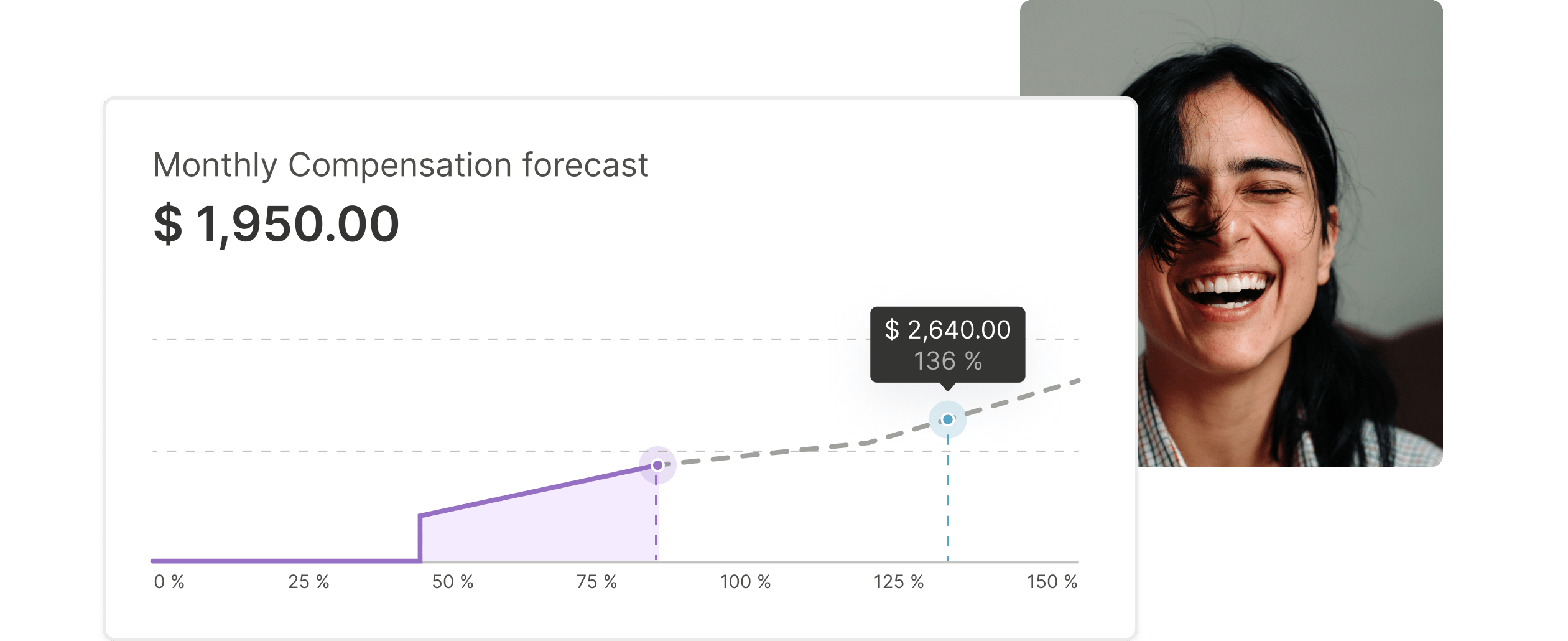
- Transparency and Trust: Because deal and commission data sync instantly, reps can track their earnings in real time. This transparency builds confidence and reduces shadow accounting. For example, Pennylane’s sales team leverages Qobra’s Salesforce integration to keep remuneration data fully aligned with real-time performance, directly inside Salesforce.
- Time Savings & Accuracy: Qobra automates the most time-consuming aspects of commission management. At GoCardless, Qobra helped reclaim 3 days per month of ops time and restored 100% trust from the sales team.
- Performance Boost via Visibility: Real-time dashboards within Salesforce let reps see how each opportunity affects their quota and earnings. This visibility drives motivation. As discussed in Qobra’s blog on real-time commissions, such transparency can be a powerful performance lever.
- Seamless Scalability: Qobra is used by scale-ups and enterprise teams alike. Companies like Ogury use the Salesforce integration to streamline complex compensation models, reduce disputes, and centralize reporting.
"Now, with a real-time overview of commissions, when I close a deal, I can see how much I'm going to receive, and you also send email notifications that help salespeople feel more connected to the deal. Everyone now trusts the commission tool."
Borja Valiente, VP Sales at GoCardless
Use Case Example:
At Welcome to the Jungle, over 100 sales reps use Qobra’s Salesforce integration to track commissions in real time. This empowers the team to focus on closing deals that drive results, while finance and operations benefit from clean, auditable data. Similarly, at Ogury, the integration enabled faster closing of commission periods and reduced administrative overhead, while offering reps complete transparency into their earnings pipeline.
“With Qobra and now the automatic connection to Salesforce, you get updates every two hours, so people know in real time how much they are going to be paid.”
Philippine Vendeuvre, Sales Operations Director at Ogury
Spiff
Integration Type:
Spiff offers a Salesforce-native AppExchange app and is now part of the Salesforce Sales Cloud product family (Salesforce acquired Spiff in 2024). The integration uses a managed package (“Spiff for Salesforce”) to pull CRM data into Spiff’s commission platform and also provide in-CRM components. This includes a two-way aspect: Salesforce data flows into Spiff for calculation, and Spiff’s results (like commission estimates) can be surfaced inside Salesforce UI.
Key Integration Features:
- AppExchange Connector: Spiff’s AppExchange app (launched 2021) lets users import Salesforce records directly into Spiff in real time. Opportunities, accounts, and other objects sync automatically, eliminating CSV exports. Changes in Salesforce (e.g. a deal closing) promptly update in Spiff, which then recalculates commissions instantaneously.
- Commission Estimator in Salesforce CPQ: Spiff provides a Commission Estimator plugin for Salesforce CPQ (quotes) that calculates a rep’s potential commission on a deal right inside Salesforce. As reps configure a quote, Spiff’s engine runs in the background to show projected commission and quota attainment. This real-time estimator gives salespeople immediate feedback on how discounting or upselling would impact their pay, motivating optimal deal structures.
- In-CRM Visibility: With Spiff’s integration, sales reps and managers can view commission reports and dashboards within Salesforce (often via a Spiff Lightning component or tab). They get up-to-date commission totals, payout history, and progress to targets without leaving the CRM. Spiff’s low-code engine handles complex logic behind the scenes, but the outputs (earnings, leaderboards, etc.) are embedded in Salesforce for convenience.
- Bidirectional Updates: As part of the Salesforce-owned Sales Cloud, Spiff is evolving toward deeper native integration. It already shares data both ways – for example, it can write calculated commission results or payout records back to Salesforce objects if needed. This ensures Salesforce becomes a single source of truth for both sales data and compensation data, aligning teams on one platform.
Benefits for Sales Teams:
- Real-Time Insight and Motivation: Spiff’s integration provides real-time commission visibility to reps, which has been shown to increase motivation and performance. Salesforce noted that with Spiff, sales reps see their commissions in real time, increasing transparency and driving them to hit goals. Instead of waiting for monthly reports, reps can track earnings as deals close, keeping them engaged and pushing for more sales.
- Simplified Commission Processes: For finance/ops, the Salesforce–Spiff connector automates formerly manual work. One customer, ExpertVoice, said “The Spiff integration with Salesforce has been extremely beneficial. The real-time access to Salesforce data simplifies the commission process...and has brought more transparency for our sales teams, leading to greater motivation and results.”. This highlights how pulling live CRM data into Spiff removes friction between sales and finance – no more exporting spreadsheets or disputing numbers – and creates a single, trusted process.
- Deal Planning and Higher Quota Attainment: The in-CRM commission estimator directly boosts sales effectiveness. Reps can model different quote scenarios to maximize their commission, aligning their behavior with company goals (e.g. favoring higher-margin products). According to Spiff’s CEO, giving reps visibility into earnings “arms them with information and motivation… to focus on the deals that will have the biggest impact”. Early visibility into potential payouts means reps are not “flying blind” – they know exactly what closing a particular deal means for their paycheck, which can shorten sales cycles and encourage upselling.
Use Case Example:
Many high-growth companies use Spiff’s Salesforce integration to scale their commission processes. For instance, Turnitin implemented Spiff’s Commission Estimator so that their sales reps could get real-time insights into earnings on each quote. Their Commissions Manager noted, “It’s imperative that those on variable comp plans have real-time insights into how they are performing… Spiff Commission Estimator on AppExchange puts that information at reps’ fingertips right within quotes in Salesforce.”. This capability has helped Turnitin’s sellers optimize their quotes and boosted overall sales performance by aligning it with personal incentive.
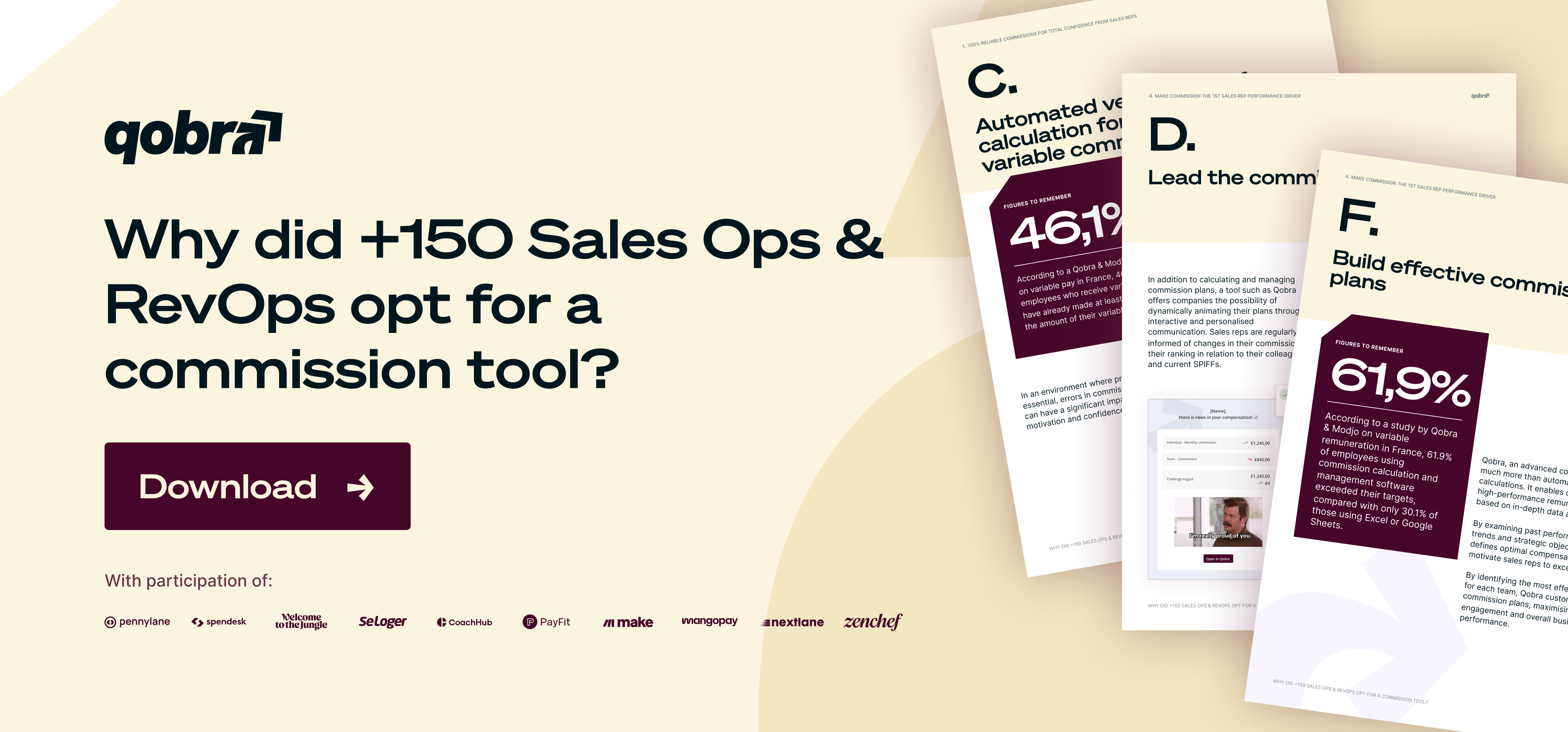
CaptivateIQ
Integration Type:
CaptivateIQ offers a native Salesforce integration via its platform and an optional managed package on the AppExchange. Salesforce data (such as opportunities, closed-won deals, account info, etc.) can be synced directly to CaptivateIQ for commission calculations. In addition, CaptivateIQ provides a Salesforce Lightning component/tab that embeds the CaptivateIQ app interface inside Salesforce for reps. The integration is primarily one-way (Salesforce ➜ CaptivateIQ for data), but the embedded experience means Salesforce users can access CaptivateIQ outputs within CRM.
Key Integration Features:
- Automated Data Sync: CaptivateIQ connects with Salesforce to pull sales data automatically on a schedule or in real-time triggers. This ensures that all the inputs for commission formulas (deal values, products sold, quotas from Salesforce, etc.) are up-to-date in CaptivateIQ. For example, when a deal is marked "Closed Won" in Salesforce, it can flow into CaptivateIQ without any manual export, initiating the commission calculation immediately.
- Embedded Rep Dashboard in Salesforce: Uniquely, CaptivateIQ provides a package that lets reps view their commission info without leaving Salesforce. The CaptivateIQ web app can be placed as its own tab in Salesforce (including support for Lightning pages). Through this embedded UI, sales reps can log in with SSO and interact with their CaptivateIQ commission dashboard, payout statements, and plan documents all within the familiar Salesforce environment. They can check their current payout status, see breakdowns by deal, and even electronically sign compensation plan agreements or submit commission inquiries to finance from that interface. This two-in-one experience drives adoption since reps don’t have to switch systems.
- Real-Time Calculations & Updates: CaptivateIQ’s integration is designed to handle even complex, large-scale commission data swiftly. As data comes in from Salesforce, the platform’s calculation engine (SmartGrid™) processes commissions in real time or near-real-time. Any adjustments (e.g., a deal adjustment or a rep’s quota change) updated in Salesforce can trigger recalculations so that the numbers reps see are always current.
- Audit Trail and Accuracy: All data brought in from Salesforce is logged in CaptivateIQ’s audit trails, preserving a clear history of inputs for compliance. The integration ensures the commission system is as reliable as the source CRM data – if it’s in Salesforce, it’s reflected in the commission statements. This alignment simplifies reconciliation and trust in the numbers.
Benefits for Sales Teams:
- Speed and Efficiency: Integrating Salesforce with CaptivateIQ dramatically speeds up commission processing. A great example is Gong, which moved from a manual spreadsheet process to CaptivateIQ – they were able to increase the speed of monthly commission calculations by 60× (from hours to minutes). This efficiency gain is directly due to automation and seamless data flow from Salesforce (no more cutting/pasting data). Sales ops teams can now calculate commissions in a fraction of the time, freeing them to focus on strategy rather than number-crunching.
- Real-Time Visibility for Reps: With the Salesforce-embedded dashboard, sales reps get real-time insight into their earnings and performance. No more waiting for quarterly spreadsheets – reps can see their upcoming payouts, attainment vs. quota, and deal-by-deal commission anytime in Salesforce. This transparency reduces anxiety and shadow accounting; reps don’t feel the need to track commissions in their own spreadsheets because they trust what they see in the system.
- Enhanced Collaboration and Fewer Disputes: Features like in-app plan sign-off and inquiry submission streamline communication between sales and finance. When a rep has a question about a commission payout, they can raise it through the Salesforce-integrated CaptivateIQ tab, and it’s tracked and resolved in one place. This eliminates back-and-forth emails and miscommunications. The result is greater alignment: finance trusts the data (since it ties back to Salesforce), and reps trust they’re paid correctly, improving overall sales morale.
Use Case Example:
Gong, a fast-growing SaaS company, leveraged CaptivateIQ’s Salesforce integration to overhaul its sales compensation. Gong’s RevOps director noted that CaptivateIQ’s Salesforce integration ties key data sources together for seamless, real-time calculations. After integrating, Gong’s small comp team managed commissions for 200+ sellers with ease, cutting calculation time dramatically and nearly eliminating errors.
Xactly
Integration Type:
Xactly has one of the longest-standing Salesforce integrations, offered through its AppExchange applications (such as Xactly Incent for Salesforce). It provides a bi-directional sync between Salesforce and Xactly’s Incentive Compensation Management system. This means Salesforce data (like opportunities, orders, etc.) flows into Xactly for comp calculations, and Xactly can push key outputs (like commission results, forecasts, or alerts) back into Salesforce. The integration is delivered via a managed package and API connectors, ensuring that Salesforce and Xactly act in concert as a unified solution.
Key Integration Features:
- Single Sign-On & Embedded UI: Xactly Incent integrates directly into the Salesforce interface. Users sign on to Salesforce and gain one-click access to Xactly’s commission data within the Salesforce navigation. For example, a sales rep can open a “Xactly Commissions” tab in Salesforce to see their quota attainment and commission summary, without a separate login.
- Real-Time Data Exchange: The integration uses a standards-based approach to keep Salesforce and Xactly in sync. Bi-directional data object integration means that when a deal closes in Salesforce, Xactly is updated in near real time. Conversely, when Xactly calculates a commission or a bonus attainment, that info can be written back to Salesforce (for instance, populating a custom “Commission Amount” field on opportunities or feeding a Salesforce dashboard). This two-way flow ensures consistency across the systems.
- Commission Dashboards & Analytics: Within Salesforce, Xactly surfaces rich performance data. Salespeople and managers can view their commission plans, quota attainment, sales ranking, and payment details from a single dashboard. These dashboards update automatically with the latest data. Xactly also integrates with Salesforce CRM Analytics (Tableau CRM), allowing companies to embed Xactly’s AI-driven insights and predictive analytics into Salesforce reports and analytics pages. This tight analytics integration means, for example, a manager could analyze how commission spend is correlating with Salesforce pipeline or win rates, all inside the CRM.
Benefits for Sales Teams:
- Unified Sales Performance Management: By integrating with Salesforce, Xactly turns the CRM into a one-stop hub for both sales pipeline and pay pipeline. Reps have full transparency into their performance pay in the same place they track their deals. This unity reduces friction – when reps can easily see “I’ve closed $X and that means $Y commission” on Salesforce dashboards, they spend less time chasing finance for answers. It also helps managers align sales behaviors with goals by making incentive data readily visible alongside CRM data.
- Increased Rep Motivation and Quota Attainment: The immediate feedback via commission forecasts and attainment charts motivates reps to hit targets. Xactly reports that customers using the Salesforce integration see improved seller productivity (~20% increase on average) due to reps focusing on the most profitable deals and optimizing deal configurations.
- Time Savings & Accuracy for Admins: Sales operations and finance benefit from automatic data flow and calculation. Manual commission spreadsheets are eliminated, reducing errors and saving time. Xactly’s integration ensures commissions are calculated promptly and correctly once an opportunity is closed, and even automatically triggers payouts or accounting entries. The tight integration also simplifies compliance (SOX, audit) since all data is traceable back to Salesforce records.
- Proven Scalability: Xactly’s tools are enterprise-grade and the Salesforce integration has proven itself with large sales teams. In fact, Salesforce’s own global sales team (10,000+ reps) relies on Xactly for incentive compensation. This underscores that the integration can handle huge volumes of data and complex sales crediting scenarios.
Use Case Example:
A notable testimonial comes from KIO Data Centers, which uses Salesforce CPQ alongside Xactly. “Salesforce CPQ and Xactly integrate seamlessly together, giving us the best of breed to manage our lead-to-cash process,” says Santiago Suinaga S., Managing Director at KIO. In practice, KIO’s sales team builds quotes in Salesforce CPQ and uses Xactly’s embedded estimator to see expected commissions.
QuotaPath
Integration Type:
QuotaPath provides a Salesforce AppExchange application that embeds QuotaPath’s commission tracking capabilities directly into Salesforce. The integration is bi-directional, with Salesforce feeding deal data into QuotaPath, and QuotaPath sending earnings and attainment data back into Salesforce. It offers real-time synchronization: as soon as an opportunity is updated in Salesforce, QuotaPath’s calculations refresh, and the latest commission figures can be displayed inside Salesforce for reps and managers.
Key Integration Features:
- In-Salesforce Earnings Reports: By installing QuotaPath’s app in Salesforce, admins can create custom reports and dashboards in Salesforce that show commission earnings data (total commissions, by plan, by rep, etc.). QuotaPath essentially pushes the calculated commission figures back into Salesforce (often into a custom object or fields), so that standard Salesforce reporting can be used.
- Real-Time Sync & Zero Data Lag: QuotaPath’s integration is noted for its speed – EverView, one customer, achieved “0 lag in data via Salesforce sync”. Whenever deals close or update in Salesforce, QuotaPath instantly ingests those changes and recalculates commissions. Conversely, when quotas or draws are adjusted in QuotaPath, those can flow back to Salesforce. This ensures both systems mirror each other. Sales reps thus always see up-to-the-minute commission info in Salesforce, which is crucial for fast-paced sales cycles.
- Embedded QuotaPath Interface: In addition to data syncing, QuotaPath can embed parts of its UI within Salesforce (for instance, as a Lightning Component). Reps might have a “My Commissions” tab in Salesforce that is powered by QuotaPath – allowing them to drill down into deals, see payout details, or interact with their compensation plan visually. The integration uses Salesforce’s authentication, so users seamlessly transition into the QuotaPath views.
- Commission Forecasting on Pipeline: A unique feature often cited by QuotaPath users is the ability to forecast commissions on open opportunities. The integration can pull in pipeline data from Salesforce and combine it with comp plans to show “potential earnings on forecasted deals.” In practice, a QuotaPath user can toggle between actual closed deals and projected deals to see how hitting certain opportunities will increase their commission or move them to the next tier. This forward-looking insight, accessible because QuotaPath reads live Salesforce pipeline data, helps reps prioritize the deals that would most impact their payout.
Benefits for Sales Teams:
- Transparency and Motivation: QuotaPath’s integration gives reps direct, real-time visibility into their earnings inside Salesforce, which greatly boosts transparency and trust. As the QuotaPath team notes, having this data display in Salesforce means reps clearly see how commissions are calculated and earned, increasing motivation. When reps can track their progress toward commission in the same place they track their sales, it creates a constant incentive to close more business.
- Reduced Errors and Administrative Burden: The integration automates commission calculations which removes the need for reps or managers to maintain their own tracking spreadsheets. This significantly reduces errors and disputes – the data is drawn from a single source (Salesforce) and computed consistently in QuotaPath. Also, payouts can be triggered automatically when criteria are met, ensuring timely and accurate payments.
- Quick Implementation and User Adoption: QuotaPath emphasizes ease of use. Companies have found the Salesforce integration fast to deploy and easy for reps to adopt. Dennis Dube, an SVP of Operations who implemented QuotaPath, remarked on “the ease to get up and running with QuotaPath… and QuotaPath’s real-time Salesforce integration” as a major plus. For the sales team, since the commission data appears in a familiar tool (Salesforce), adoption is high – EverView saw 95% daily active usage of QuotaPath among their reps.
- Improved Performance & Alignment: With sales and compensation data in one place, managers can better align sales behavior with company goals. They can set up Salesforce alerts or reports (powered by QuotaPath data) to coach reps, for example if a rep is close to a higher commission tier, the manager can encourage a few more deals.
Use Case Example:
EverView, a software company with an 80-person sales team, experienced a transformation after integrating QuotaPath with Salesforce. Before, they managed 35 commission plans via spreadsheets, leading to confusion and delays. After integration, EverView cut their commission calculation time down to just 3 hours a month and achieved 95% adoption of the new system by reps. Reps could suddenly “review in QuotaPath what their earning potential could be” on upcoming deals, which motivated them to close deals faster to reach the next bonus tier. In just three months post-implementation, EverView recorded record sales. This success story illustrates how QuotaPath’s Salesforce integration not only automates commission tracking but actively contributes to better sales outcomes through improved visibility and morale.
Conclusion
Each of these commission management tools – Qobra, Spiff, CaptivateIQ, Xactly, and QuotaPath – brings its own strengths to Salesforce integration. They all share common advantages of real-time data flow, in-CRM visibility of commissions, and improved accuracy and transparency. The best choice for an organization may depend on factors like complexity of commission plans, preferred user experience, and specific features (e.g. CPQ integration or forecasting tools). What’s clear is that integrating a commissions platform with Salesforce delivers significant benefits: it aligns sales incentives with pipeline management, empowers reps with knowledge of their earnings, and frees up finance/ops teams from tedious tasks. By choosing one of these integrated solutions, companies can modernize their incentive compensation process and ultimately drive better sales performance.
